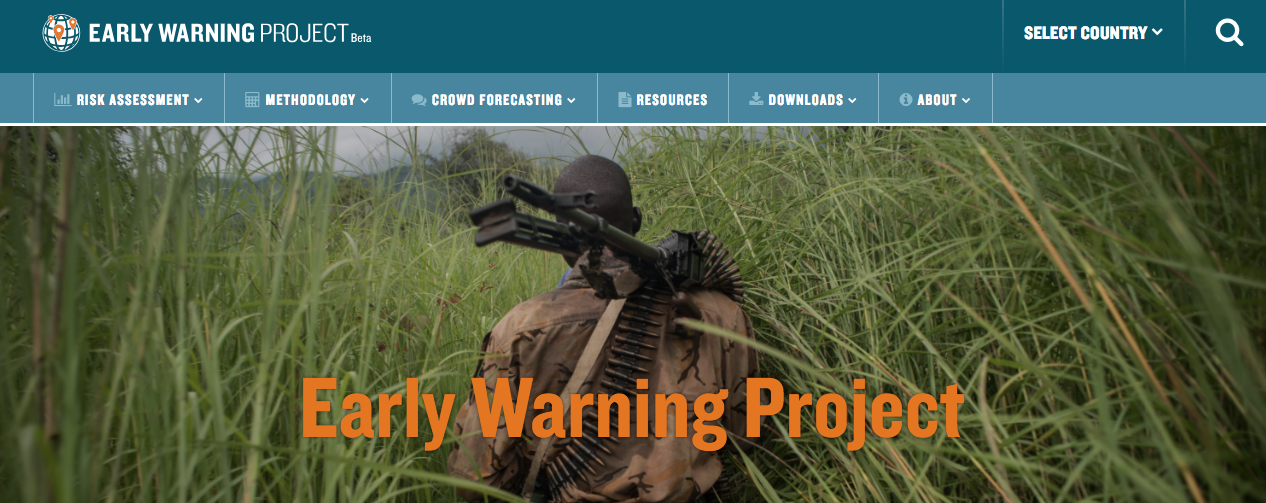October 09, 2018

This fall, the Simon-Skjodt Center will release the Early Warning Project’s Statistical Risk Assessment for 2018-2019, which ranks countries based on their risk for new episodes of mass killing. Using state-of-the-art quantitative and qualitative methods and a wide range of publicly available data, the Early Warning Project is a first-of-its-kind public early warning system for mass atrocities. The project aims to provide governments, civil society groups, and other influential actors with early and reliable warnings of mass atrocities and, as a result, greater opportunities to take preventive action.
The challenges in responding to mass atrocities in Syria, Burma, and South Sudan once again have reminded the world of the need to invest more in prevention. Preventing potential atrocity crises requires forward looking analysis to identify and understand the situations at greatest risk. Together with Dartmouth College’s Dickey Center for International Understanding, the Simon-Skjodt Center launched the Early Warning Project to help improve public assessments of risk and early warning of mass atrocities.
This year’s Statistical Risk Assessment incorporates new data and refined statistical methods to maximize the accuracy and practical utility of the results. The three most important updates are:
- The new results incorporate the risk of state-led and non-state-led mass killing. Our previous assessments forecasted state-led mass killing risk. Newly available data on non-state-led mass killing, such as Boko Haram’s killing of Nigerian civilians, allowed us to incorporate non-state-led mass killing into our assessment.
- The new results estimate risk over a two-year period. Our past assessments estimated risk over one year. Based on our experience working with users, we have switched to two-year forecasts. An expanded time frame allows policy makers and experts to conduct additional analysis and planning, and implement preventive actions while they are timely.
- Our risk assessment now takes advantage of newly available data. We conducted a new review of publicly available data sources and incorporated relevant and credible data into our model, most notably several measures from the Varieties of Democracy (V-Dem) project.
We constantly strive to improve this early warning system for mass atrocities, and will continue to incorporate advances in forecasting methods and available data.
In addition to the changes in data and methods, we are changing our site and its interface. Our new results will launch on our updated Early Warning Project website. The URL remains the same: www.earlywarningproject.org. The new site will include new information, interactive data tools, accessible reports, and data files that are easier to download.
View All Blog Posts